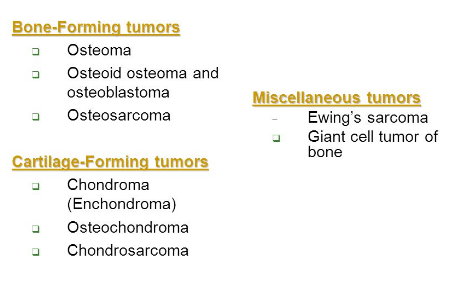What you need to know about Primary Bone Cancer Treatment
Contents
- 1 What you need to know about Primary Bone Cancer Treatment
- 2 What does the Procedure Involve?
- 3 How Long Should I Stay at my Destination?
- 4 What’s the Recovery Time?
- 5 What About Aftercare?
- 6 What’s the Success Rate?
- 7 Are there Alternatives to Primary Bone Cancer Treatment?
- 8 What Should You Expect Before and After the Procedure
There are several treatment options available for primary bone cancer. The type of treatment you have will depend on the type, location, size, and stage of your cancer, as well as your age, general health, and preference. The treatment option for primary bone cancer includes surgery, radiation therapy, chemotherapy, cryosurgery, and targeted therapy.

What does the Procedure Involve?
Surgery for tumors in a leg or arm
Surgery is the most common treatment for primary bone cancer. It aims to remove the tumor, as well as some of the bone tissue surrounding it. There are different types of surgery depending on the location of cancer:
-
Limb-sparing surgery – this surgery is done to remove cancer but keep the limb. It is performed in about 9 out of 10 people. During limb-sparing surgery, your surgeon will take out the affected part of the bone. Some normal-looking bone and muscle that surrounds it will also be removed. The bone that is removed will be replaced with a bone graft (a piece of healthy bone from another part of your body or from a “bone bank”) or an implant.
-
Surgery to remove the limb (amputation) – when it is impossible to remove all of the cancer without affecting the leg or arm too much, the only effective treatment is to remove the limb. This type of surgery is uncommon and is done in about 1 out of 10 people.
-
Rotationplasty – this surgery may be needed when the tumor is located around the knee or in the thigh bone. This surgery involves removing the tumor, then the lower part of the leg is rotated 180 degrees and attached to the upper part of the leg so that your ankle becomes your new knee joint. To replace the lower part of the leg, an external prosthesis is used.
All types of surgery are performed under general anesthesia.
Surgery for cancers in other parts of the body
If the cancer is located in your lower jaw, part of the jaw where the tumor is can be removed. It will then be replaced with bones from other parts of your body. Surgery for other parts of your body, such as the pelvic bones, are complex and need to be planned carefully.
Radiation therapy
Radiation therapy, or radiotherapy, uses high-energy beams, such as X-rays, to kill cancer cells. It is most often used to treat a type of primary bone cancer called Ewing sarcoma. During the procedure, you will lie on a table that slides into a special machine. The machine will move around you and aim the high-energy beams at specific points on your body.
This type of treatment is usually used before surgery to shrink the tumor, making it easier to remove and reducing the chance of amputation. It may also be used in people with primary bone cancer that cannot be removed with surgery, or combined with other types of treatment.
Chemotherapy
With chemotherapy, drugs are used to kill cancer cells. The drugs are usually injected into a vein (intravenously) for several hours. It is an important part of treatment for Ewing sarcoma and osteosarcoma but is not typically used to treat chordoma and chondrosarcoma.
Cryosurgery
Cryosurgery is sometimes performed to replace surgery to remove tumors from the bone. It uses liquid nitrogen to freeze and kill cancer cells.
Targeted therapy
Targeted therapy uses a drug that is specifically designed to interact with a molecule causing cancer cells to grow. Doctors use denosumab (Xgeva), a monoclonal antibody, in targeted therapy. It is approved to treat adults and skeletally mature adolescents who have giant cell tumor of bone that cannot be treated with surgery.
How Long Should I Stay at my Destination?
Your length of stay in the local area depends on the type of treatment you have. After surgery, you may need to stay in the hospital for 4 to 7 days and stay in the country for 10 to 14 days. The length of stay after chemotherapy, radiation therapy, or targeted therapy depends on your treatment plan or cycle. Your cancer team and/or medical travel team will be able to advise you on this matter.
What’s the Recovery Time?
Everyone recovers differently. It may take several months for your bone to fully heal after surgery. If you have had an amputation, it may take a year before your limb is completely comfortable. With therapy, you may be able to return to your normal routine, including work, when you do not experience any symptoms or side effects that interfere with your ability to perform your daily activity. Ensure to ask your employer to adjust your work schedule when you are undergoing therapy.
What About Aftercare?
After surgery, physical therapy and rehabilitation are very important. Physical therapists will show you exercises to keep the muscles around your surgery site flexible and strong. Physical therapy will help you regain ease of movement and flexibility. Following the recommended rehabilitation program may offer the highest chance of good long-term limb function.
You may also need to attend checkups every 3 to 12 months after your treatment. These checkups are important to ensure that cancer has not come back and to help you manage any side effects from the treatment.
What’s the Success Rate?
Since every primary bone cancer case is different, the success of your treatment depends on your specific condition. Treatment for primary bone cancer is generally safe and many patients may be cured completely after successful treatment.
It is important to know that primary bone cancer treatment does carry some risks and side effects, such as appetite loss, infection, hair loss, diarrhea, scarring, difficulty moving, and pain.
Are there Alternatives to Primary Bone Cancer Treatment?
Many people take part in clinical treatments as an alternative to the primary bone cancer treatments mentioned above. A clinical trial is a study and research that is used to develop new treatments for cancer.
What Should You Expect Before and After the Procedure
Before primary bone cancer treatment, you may experience symptoms that stop you from enjoying your life. It can also spread to other parts of your body and threaten your life. After surgery, the symptoms should be relieved and your chance of being cured completely is good. It can be very hard to accept sudden changes in your ability to move and your looks. It is important to remember that those who love you will not see you any differently as a person. Let them know how you feel so they can help to support you.
For an in-depth analysis of a Primary Bone Cancer Treatment, watch this short video.
To check prices or to book a Primary Bone Cancer Treatment, in Thailand or anywhere else in the world, head on over to MyMediTravel now!

